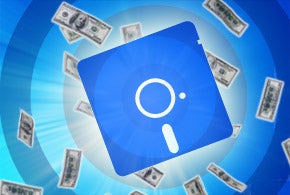Software licensing
 Opportunity: Software Licensing Revenue Recovery
Opportunity: Software Licensing Revenue Recovery
For software vendors and, by extension, their channel partners, the lack of visibility into how software is being used creates revenue leakage.
 Best Sources of Upside for ISVs
Best Sources of Upside for ISVs
Mobile apps (51%), virtualization (45 %), subscription-based licensing (43%), embracing public cloud computing (41%) and the Internet of things (37%) are cited as having the most growth potential.
 Greatest Sources of Risk
Greatest Sources of Risk
Nearly half (48%) cited security. Only 20% of respondents see risk associated with bring-your-own-device practices, while mobile apps and public cloud were cited by 18% and 17%, respectively.
 Role of the Internet of Things
Role of the Internet of Things
32% cited IoT is having a high impact on customer satisfaction, while 30% said it is having a high impact on security. In the next 12 to 24 months, 16% said that the IoT will cause a significant impact on business models.
 Impact of the Cloud
Impact of the Cloud
38% said cloud security is still a concern. In 12 to 24 months, 15% of respondents said the cloud will impact business models and lifecycle processes.
 Impact of Virtualization
Impact of Virtualization
29% said security concerns are having a high impact. In 12 to 24 months, 13% said virtualization will affect lifecycle processes.
 Impact of Mobile Computing
Impact of Mobile Computing
Customer satisfaction (34%), new product innovation (33%) and security concerns (33%) are all high-impact issues. In 12 to 24 months, 17% of respondents said they will feel the effect of mobile in both the security arena and supporting new business models.
 Licensing Options
Licensing Options
Only 51%, offer “try-and-buy” options, and 49% offer variable-licensing models to accommodate customer preference. Only 47% package different product variants to accommodate unique market needs. Still fewer, 39%, offer upgrade paths to more expensive software versions. Only 23% offer “freemium” licenses. And just 20% offer mobile versions of their software.
 Dependence on Perpetual Licensing
Dependence on Perpetual Licensing
Just over a quarter (26%) said that all of their revenue comes from perpetual licenses. Within two years, this will shrink to 14%. But 61% said half or more of their revenue still comes from perpetual licenses today. Within two years, this will decrease to 54%.
 Dependence on Usage-Based Licensing
Dependence on Usage-Based Licensing
Today, 17% of producers said that half or more of their revenue comes from usage-based licensing models. Within two years, that will increase to 21%.
 Usage of Licensing-Management Systems
Usage of Licensing-Management Systems
61% do not rely on a commercial licensing system. Rather, they develop and maintain their own licensing systems in-house to address at least some of their needs. Only 35% use a purpose-built commercial licensing technology.
 Software Revenue Leakage
Software Revenue Leakage
Software license non-compliance is rampant. A full 63% said that customers are out of compliance in that they’re using software beyond what they’re entitled to use.
 Levels of Software-Licensing Automation
Levels of Software-Licensing Automation
The majority of producers still have not automated their back offices by implementing entitlement-management systems. In fact, 58% develop and maintain their own entitlement-management systems to address at least some of their needs. In contrast, 22% do nothing, while 19% use a proprietary, custom extension of their ERP/CRM systems. Less than a quarter (23%) use a purpose-built third-party commercial entitlement management system.

